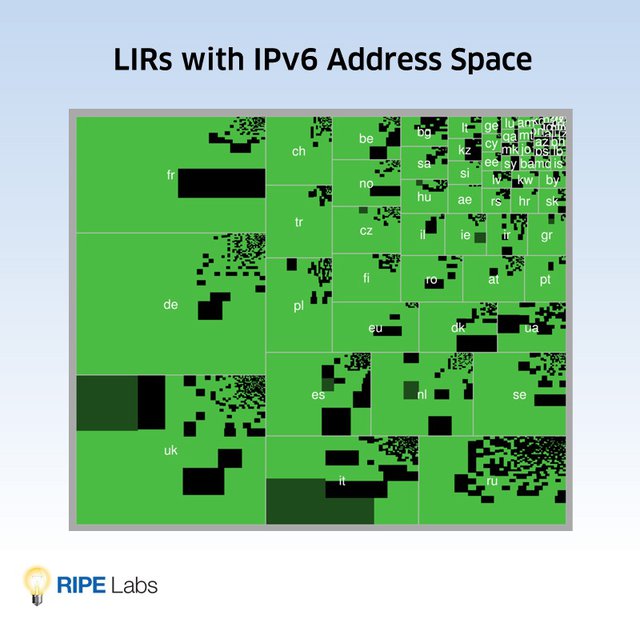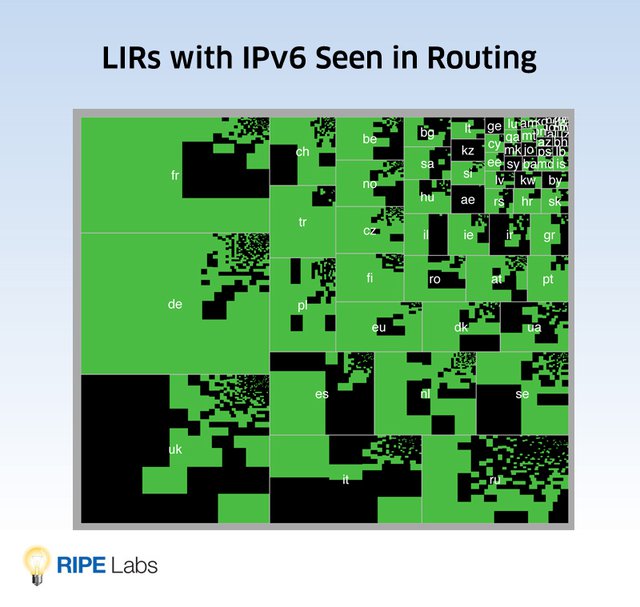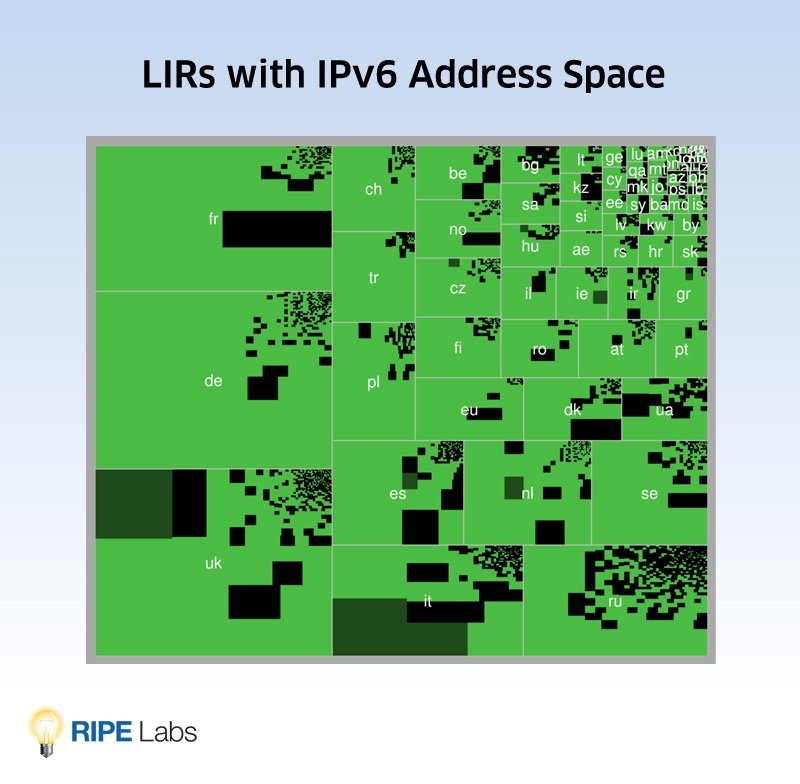Often when looking at IPv6 deployment statistics, the size of the organisation or the network is not taken into account. In this article, we look at IPv6 deployment of Local Internet Registries (LIRs) per country in correlation with the size of the LIR.
When looking at IPv6 deployment at the LIR level, we can look at the following two metrics:
- The percentage of LIRs that have IPv6 address space (currently at 47%) and;
- What percentage of LIRs has IPv6 address space that is visible in the global routing table (currently at 29%).
What these numbers don't take into account is the sizes of the LIRs. For billing purposes, LIRs are divided into size categories based on the IP address space they hold and a number of other factors. We used these size categories when producing statistics like https://labs.ripe.net/Members/wilhelm/ipv6-ripeness-sorted-by-lirs-age-and-size . Taking this one step further, we can use the size of the LIRs as a weight to normalise deployment metrics. We took the total IPv4 address space held by an LIR as a good indication for the LIR’s size, and took a fresh look at IPv6 deployment metrics taking LIR size into account.
We can visualise this notion with "treemaps". Here each LIRs is represented as a rectangle. The size of the rectangle represents the size of the LIR (i.e. how much IPv4 address space the LIR holds), the colour of the rectangle represents if the LIR has IPv6 address space (Figure 1), and if (part of) that address space is routed (Figure 2). Green rectangles represent LIRs that have IPv6, and black the ones that don't have IPv6. In Figure 1 we also used darker green for LIRs of which we know they will receive IPv6 addresses from another LIR belonging to the same organisation. We found a couple of cases like this by manual inspection, and we're pretty sure there are more cases like this that we didn't catch.
Note: you can click on the images to enlarge them.


(NOTE: due to a mix-up we had the same image showing twice here. At 2011-11-23 8:20 UTC the correct image for Figure 2 was added to this article)
If we look at this numerically we see is that 47% of LIRs have IPv6 address space, but if we weigh in the size of the LIR this becomes 81%. Or in other words: 81% of IPv4 address space in the RIPE NCC service region is held by an LIR that also holds IPv6 address space. Note: This doesn't take into account the organisations that have multiple LIRs where we see one of the other LIRs has IPv6 space (a few large ones in this class are coloured darker green in Figure 1).
Similarly, 29% of LIRs have one or more IPv6 prefixes visible in global BGP, as seen by our Routing Information System (RIS). When we apply the weighing this becomes 63%. In other words: 63% of IPv4 address space in the RIPE region is with an LIR that has IPv6 address space that is visible in global BGP.
| LIRs | LIRs, weighted by IPv4 address space | |
|---|---|---|
| Has IPv6 address space | 47% | 81% |
| Has routed IPv6 address space | 29% | 63% |
Table 1: Difference between weighted and non-weighted metrics on IPv6 deployment.
Having 81% of IPv4 address space with LIRs that also took the first step in deploying IPv6 is an encouraging sign, but is in stark contrast with IPv6 deployment stats at end-users (0.39% according to Google , roughly 2% at www.ripe.net ), or traffic stats (0.3% at AMS-IX ). This shows that for a large majority of IPv4 address space in the RIPE NCC service region have taken the first steps, but the work towards full dual-stack deployment, and later IPv6-only, is far from finished.





Comments 3
The comments section is closed for articles published more than a year ago. If you'd like to inform us of any issues, please contact us.
Karine •
Hi Emile, that is a very interesting chart! Also makes one wonder which types of company/companies the black rectangles in FR, UK and IT represent...
Emile Aben •
Hi Karine, I looked at the top 10 LIRs that don't have any IPv6 address space delegated from us, and the top industries for these are: 'isp broadband', and 'telecom NONE' (both 7 out of 10 LIRs). In our systems LIRs can self-select the industries they are in from a list of categories, which is where these labels come from.
Hervé •
Probably https://www.ripe.net/membership/indices/data/fr.proxad.html in France :-)